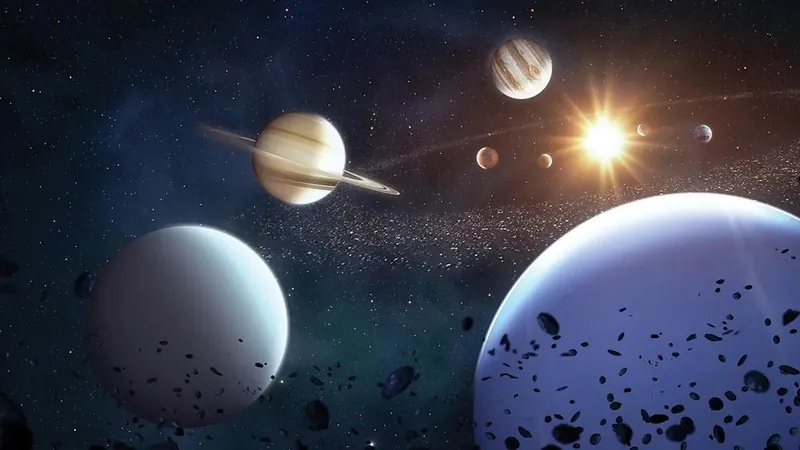
Astrophysics Breakthrough: Mysterious Jupiter-Sized Planet Spotted 3,200 Light-Years Away!
2025-06-29
Author: Daniel
A Stellar Discovery from the Edge of Our Galaxy
Astronomers have stumbled upon a fascinating find that could redefine our understanding of distant worlds: a Jupiter-sized gas giant named AT2021uey b, located approximately 3,200 light-years from Earth. Nestled in the galactic bulge, this intriguing planet takes a staggering 4,170 days to complete a single orbit around its dwarf star.
The Method Behind the Magic: Einstein’s Microlensing Technique
This remarkable discovery was made possible by microlensing, a technique grounded in Albert Einstein’s theory of relativity. Microlensing exploits the gravitational effects of massive celestial objects that distort the fabric of space-time, allowing astronomers to detect planets that otherwise remain hidden.
Initially spotted in 2021 by the European Space Agency’s Gaia telescope, the planet’s shadow needed extensive verification before its existence could be confirmed. Dr. Marius Maskoliunas, an astronomer from Vilnius University and co-author of the study published in Astronomy & Astrophysics, emphasized the complexities involved in this research, stating, "It demands a blend of expertise, patience, and a little luck!" He noted that about 90% of observed stars exhibit pulsations for various reasons, making the microlensing effect rare and elusive.
How Microlensing Works: A Dance of Light and Shadows
So how does microlensing actually function? When a massive object, like AT2021uey b, aligns precisely in front of a distant star, its gravitational influence bends the star's light around it, temporarily amplifying that light. This unique phenomenon creates a brief moment where astronomers can detect the planet from far away.
Maskoliunas provides a vivid analogy to explain this phenomenon: imagine seeing only the shadow of a bird flying past—while the bird itself remains invisible, you can make educated guesses about its type and distance based on its shadow. This metaphor encapsulates the incredible potential of microlensing to unveil hidden celestial bodies.
The Bigger Picture: A Universe Full of Hidden Gems
Since 1992, nearly 6,000 exoplanets have been identified using more conventional methods like transit photometry and radial velocity, which measure the dimming of stars or the gravitational tug of planets. However, microlensing remains a unique approach that reveals worlds beyond our wildest imagination.
This latest discovery of AT2021uey b not only piques curiosity about our galaxy but also invites us to ponder the countless undiscovered secrets that lie within the cosmos. As the universe continues to surprise us, who knows what extraordinary celestial wonders are waiting to be uncovered?



 Brasil (PT)
Brasil (PT)
 Canada (EN)
Canada (EN)
 Chile (ES)
Chile (ES)
 Česko (CS)
Česko (CS)
 대한민국 (KO)
대한민국 (KO)
 España (ES)
España (ES)
 France (FR)
France (FR)
 Hong Kong (EN)
Hong Kong (EN)
 Italia (IT)
Italia (IT)
 日本 (JA)
日本 (JA)
 Magyarország (HU)
Magyarország (HU)
 Norge (NO)
Norge (NO)
 Polska (PL)
Polska (PL)
 Schweiz (DE)
Schweiz (DE)
 Singapore (EN)
Singapore (EN)
 Sverige (SV)
Sverige (SV)
 Suomi (FI)
Suomi (FI)
 Türkiye (TR)
Türkiye (TR)
 الإمارات العربية المتحدة (AR)
الإمارات العربية المتحدة (AR)